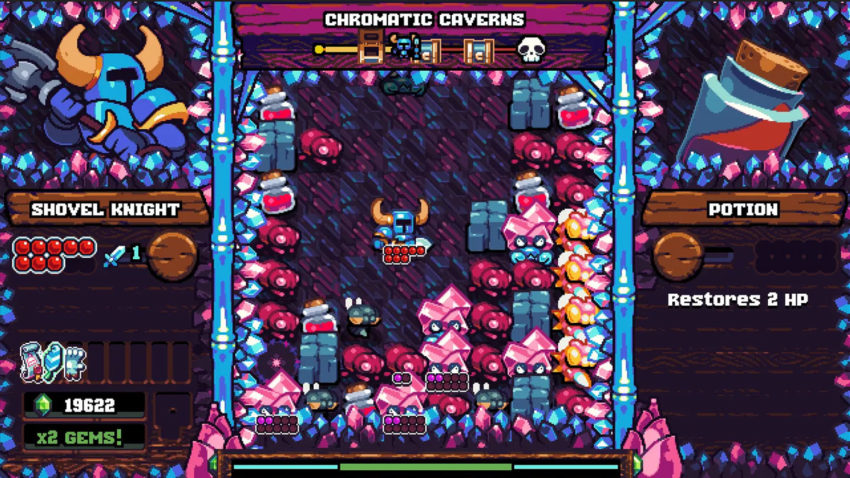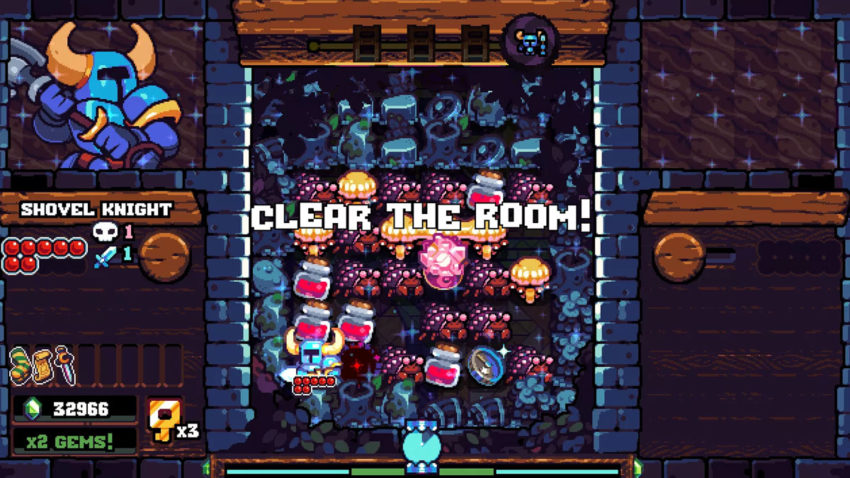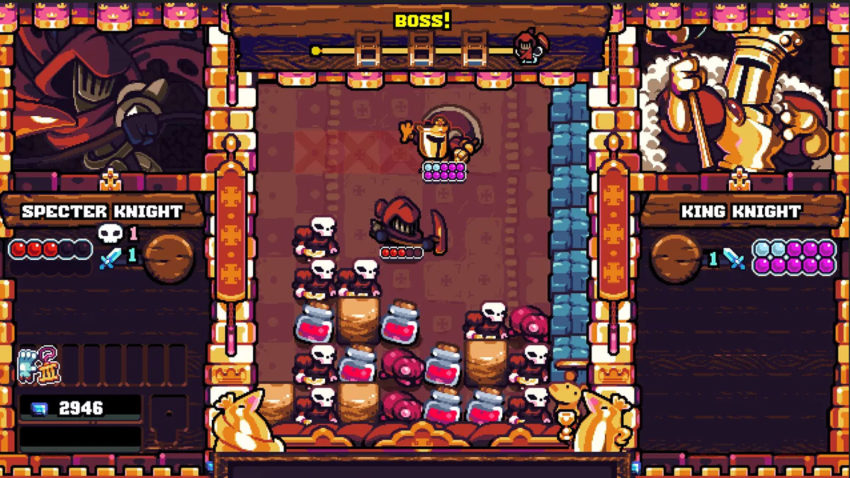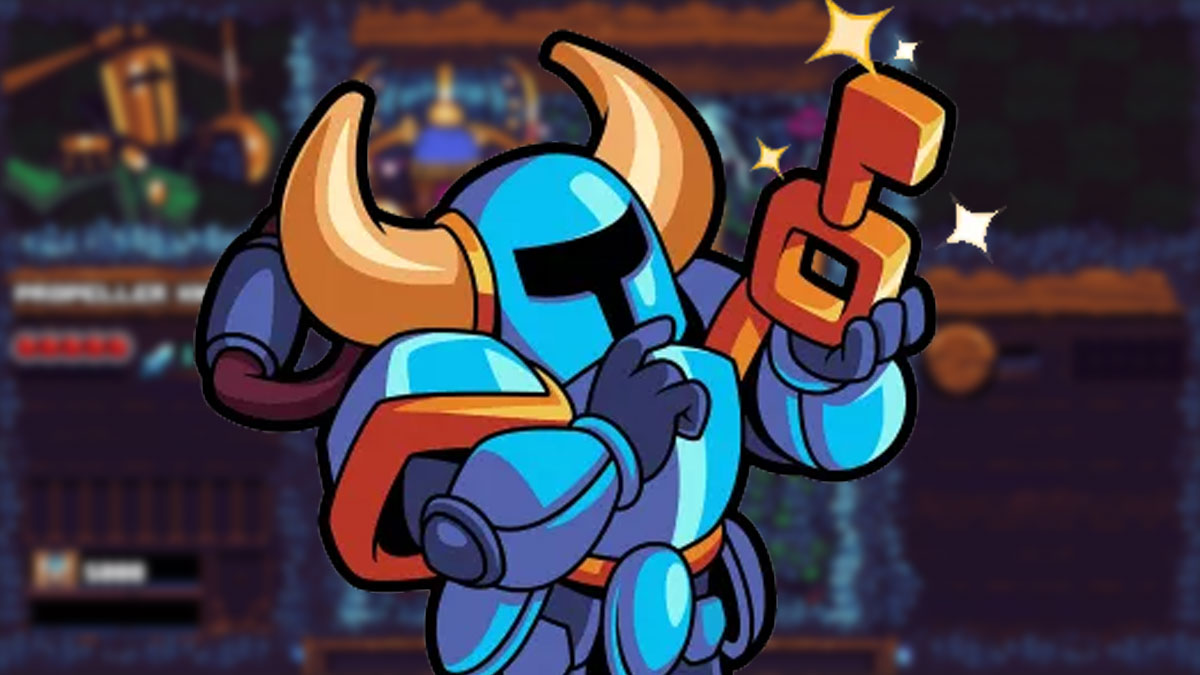Shovel Knight burst onto the indie game scene in 2014 and made a tremendous impression with its nostalgia-tinged platforming. Seven years later, developer Yacht Club is putting a new spin on the series with Pocket Dungeon, which repurposes Shovel Knight’s familiar pieces for a grid-based game that’s part roguelite, part puzzler — and all challenging.
A new way to play

Pocket Dungeon is played on an 8×8 grid, and as you move across it tile by tile, all manner of enemies, items, and obstacles start to trickle down like Tetris blocks. Bumping into any of these will cause your character to attack, and small purple pips indicate how many hits the target can take. I found it very easy to pick up the basic mechanics, but mastering them comes with a definite learning curve. Enemies are quite dangerous, and dying to even low-level goons is quite common.
Death doesn’t always mean the end of your run, though. Pocket Dungeon’s single-player campaign can be played as a roguelite or as a puzzle game, a choice you make at the start of your adventure. When playing it as a roguelite, losing all your health means dying and failing out of a run. In roguelite fashion, you keep any gems you’ve earned and can continue to spend them on items in fan-favorite Chester’s store or on a shot through Percy’s cannon, which fires you back to the most recent level. These did well in making me feel like I always had a fighting chance of conquering the stage that had just beaten me.
If you play Pocket Dungeon as a puzzle game, you can die and respawn as often as you’d like, but you’ll reach a fail state if the grid completely fills up. In both cases, a level is cleared when you’ve slain enough enemies, grabbed the key as it falls down the grid, and moved to the exit tile when it appears. It’s honestly impressive that Yacht Club managed to build a system that works seamlessly in two genres of gameplay — but that doesn’t make it any easier.
Exhausting enemies

Pocket Dungeon is difficult, in large part because enemies perpetually drop down the screen. Each enemy type has its own tactics, like red Beetos that attack you from an adjacent square, ghostly Invisishades that become intangible after every hit, and stinging Floatsomes that fuse together into jelly-fish like barriers when touching. These different behaviors are tricky to tangle with, but they also serve to make every encounter feel fresh, since every stage has its own handful of enemy types.
The core combat mechanic, called chaining, is a big help when the screen starts getting too full. If you strike one enemy, every matching enemy on adjacent tiles takes damage too. This is how you’ll clear hordes of identical enemies that flood the screen. It makes the game feel more balanced too — you’re just one knight facing a whole army, after all.
Chaining also applies to hitting rocks or picking up healing potions, and smacking into a batch of the latter can really come in clutch when facing tougher enemies. In fact, there’s a deliberate ebb and flow between actively attacking and healing. Where the original Shovel Knight relied on platforming skills to avoid damage, getting hit in Pocket Dungeon is inevitable. Striking an enemy often triggers an inescapable counterattack. This creates a very different kind of challenge, and while I prefer platformers in general, Pocket Knight feels fresh thanks to a deliberately different design.
Thankfully, pick-me-ups like relics and items can help assuage this difficulty. Relics, when purchased, offer boosts like upgraded health and explosive chains until your next defeat. Items are found within chests in the heat of battle. In all cases, they feel like an encouraging second wind in the heat of battle, one that often helped me turn the tide. Spears offer a longer reach across the grid, armor reduces damage by one, and some items even create a protective barrier on the tiles around you. Items earned from chests have a limited number of uses, but they’re enough to make or break a run as the enemies start pouring in. Even in cases where they weren’t enough to help me come out on top, they still were enough to make me feel like I “almost had it” and send me right back into another run.
How does it fare?

So far, the difficulty of Shovel Knight Pocket Dungeon stands out the most. Playing as the different knights — whom you’ll unlock after beating them in boss fights — is fun, as each comes with their own unique perk. That said, the game is equally challenging no matter which character you choose. Enemies move when you do, but they’ll also shift after a moment if you’re just holding your place on the grid. Despite that, speed isn’t the name of the game here, and rushing will only bring you to a swift death.
As challenging as it can be, it’s still an engaging experience for Shovel Knight fans. Confronting each new knight, learning their patterns to win the fight, and then trying out their new powers for yourself is rewarding. Seeing familiar friends and foes in a new context is a mix of fan service and repurposing — a combination that’s worth more than a few runs.







Published: Dec 12, 2021 08:00 am